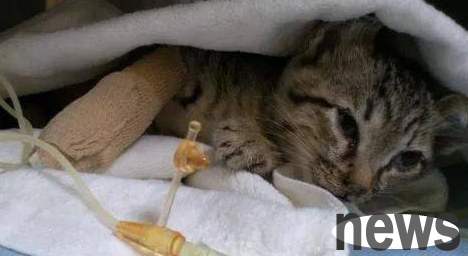Parents should also know about cat health when raising cats, because this will be more conducive to cat growth. When cats encounter diseases, they will not know how to deal with them. Therefore, some common diseases and onset of diseases in daily li...
Parents should also know about cat health when raising cats, because this will be more conducive to cat growth. When cats encounter diseases, they will not know how to deal with them. Therefore, some common diseases and onset of diseases in daily life of cats are also what we need to know as a qualified parent. The following editor will also introduce to you a common infectious disease in cats. Parents can take precautions in advance when they are in Jiandong.

Symptoms of viral rhintracheitis in cats
The main parts of the virus grow and invade include the nose, sinuses, eyes, palate, tongue, throat, tonsils and upper trachea. Cats will experience severe sneezing symptoms one to three days after being infected, and then gradually become unstimulated, have fever, have severe appetite and even do not eat. The nose is flowing at the beginning, like when a person catches a cold, and then the nose becomes thicker and thicker like a snot; tears, the conjunctiva of the eye (i.e., the whites of the eye) become red and swollen, and the eyes are so swollen that the eyes cannot open. Some cats will also experience corneal ulcers; some cats will drool and have ulcers in their mouths; as the disease develops, symptoms of cough or even pneumonia will appear. These symptoms can usually last for 7 to 14 days. The severity of the symptoms is usually related to the number of viruses infected with cats. The more the number, the more obvious and serious the symptoms will be. In addition, it is related to the following factors: the younger or older cats are, the more vulnerable to the attack of the virus, and the more serious the condition will be; the better nutrition and the better the resistance, and the stronger the ability to fight the virus; stress, cats in a stressed state will have a lower resistance, so the sick cats should be given a quiet and comfortable environment; other diseases should be caused by the cats, and the resistance to the virus will be relatively weak when they suffer from other diseases, so the symptoms will be more serious.

Prevention and treatment of viral rhintracheitis in cats
There are no specific drugs to treat cats with this disease, so the mortality rate is very high, but some cats recover through treatment. The current principles of treatment are mainly symptomatic treatment to prevent secondary infections and some treatments to increase resistance. It is very important to provide good care for the cat during the treatment process. Keep the cat's eyes and nose clean, provide nutritious food and clean drinking water. Even if the cat does not take the initiative to eat and drink, it must find a way to feed it to ensure that it has enough physical fitness to fight the virus. The cat's living place should be well ventilated and disinfected frequently. If the weather is cold, the cat should be kept warm.
But as the saying goes, "Prevention is better than treatment." Feline viral rhinotracheitis can be prevented by injecting cat triple vaccine, which is also the safest and most effective prevention method for this disease. In addition, cats should have a good ventilation environment in their lives. The utensils used by cats should be disinfected regularly. If the place is not big enough, try not to keep too many cats. When a suspicious disease is found, it should be isolated and disinfected in time to prevent contact transmission. Cats should also be fed nutritious food to enhance their ability to resist viruses.